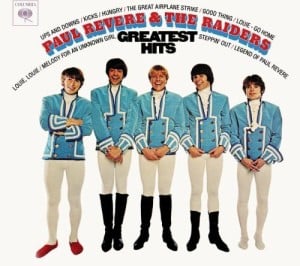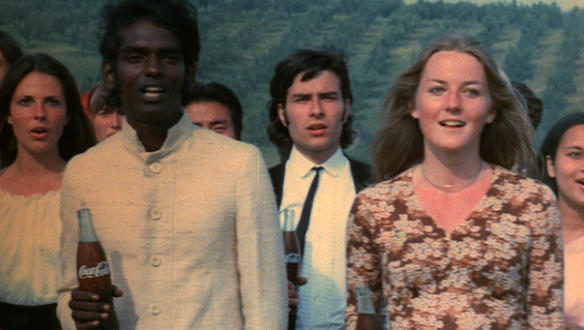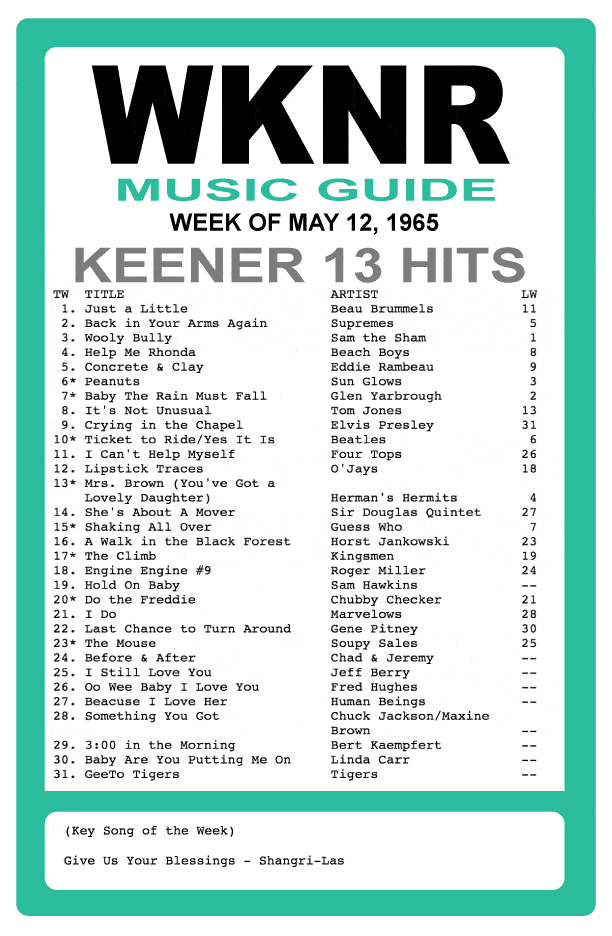We Miss Paul Revere On The 4th of July
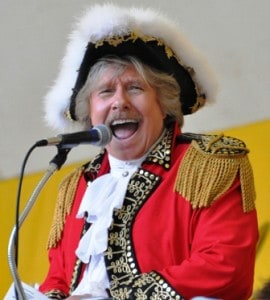
Sad thought for the 4th of July: Paul Revere will not be with us.
The leader of that All-American band, Paul Revere And The Raiders , will miss the most American of holidays.
And yet. There are memories of 50 plus years of the “The Last Mad Man of Rock and Roll“.
On “Where The Action Is”.
And countless prime-time guest appearances, including “The Brothers Smothers Comedy Hour”.
Or even Paul and the Raiders’ annual trips of the Epcot’s Flower Power Concert Series.
When Paul passed away last October, a fan wrote a letter that was published on the band’s website. In part it read:
“The world will be a lot less fun, a lot less kind and gentle without Paul Revere in it”.
Amen. Until we pull out the CD or Vinyl….AND PLAY IT LOUD!
Keener13.com Turns 13

In the summer of 2002, Steve Schram came to visit me in Jacksonville, Florida. As is always the case when the two of us are in the same place at the same time, the conversation eventually turned to our favorite subject: WKNR. Before we became roommates at Michigan State University in the ’70s, we had a parallel love affair with Keener. We had collected enough jingles, air-checks and Keener memorabilia to fill a small storage shed. Steve had actually worked at a rejuvenated Keener 13 after graduation and had just written his own page in the history of the broadcast property located at 15001 Michigan Avenue in Dearborn. He was the General Manager who built Keener’s successor, WNIC, into the most successful radio property in Detroit.
But radio being radio, we were both on to other things and at last able to spend some quality time reminiscing about that 5,000 watt station with towers south of I-94 near Metro Airport. It was an unlikely success story. The signal was so convoluted that there were parts of the metro area where WKNR couldn’t be heard after dark. The competition was fierce with well funded operations chasing the same audience in a marketplace that was hungry for the alchemy of California pop, the output of the Brill Building machine, an emerging Philly sound, the British Invasion, and oh yes, that tiny operation on Detroit’s Grand Boulevard that was fast defining a genre that would become known as “The Motown Sound”.
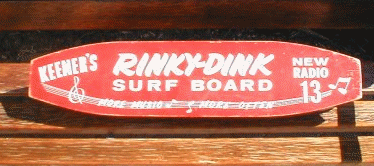
All the elements seemed to come together for Keener. It was one of few stations in the country that was guided by a woman. Nellie Knorr found herself thrust into the CEO chair of a partnership between her family, the McCoys and Hanson’s, who owned an also ran radio station, then known as WKMH. It was her husband, Fred, who was the broadcaster, partnering with John Fetzer in the Detroit Tiger baseball club, and building a network of radio stations across the state that included farm teams in Jackson, Flint and Battle Creek. But after Fred Knorr’s untimely death, it was Nellie who had the courage to bring in programmer Mike Joseph to try out this new idea, a juke box with personality, that Todd Storz and Gordon MacClendon were turning into solid gold in places like Dallas and Miami.
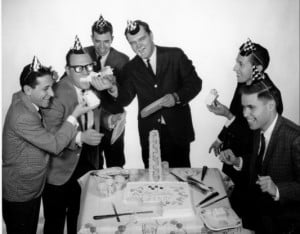
She also had the good sense to give program director, Frank Maruca, the latitude to empower the air staff to modify Mike’s rules, cutting out all but the essentials, creating an environment of what Keener legend, Bob Green, would call, “intelligent flexibility”. In essence, the DJ’s had the freedom to experiment, to take the pulse of the listeners and instantly adjust to create a strong personal bond with Detroit. Yes, there was a 31 tune playlist, but that didn’t preclude experimentation. And interaction with the audience was paramount. The listener became part of the show, over the phone and often in person. It didn’t matter if the prize you won was a Keener ball point pen or a Pontiac GTO, such was the energy of this singular entertainment engine that you wanted to connect with the “Key Men of Music” who so ably and authentically connected with you.
Bob Green convinced you to stay in school. Scott Regen introduced you to Stevie Wonder, the Four Tops and the Supremes. Michael J. Wilson turned the Mickey Mouse character into a wise-cracking Rodney the Rodent. And Gary Stevens’ Wollyburger could regularly be heard gobbling up things in the control room, culminating each feeding frenzie with a huge belch.
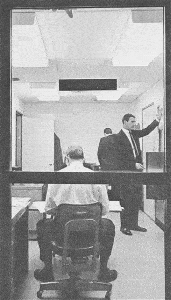
In the middle of this organized chaos sat one of Detroit’s most competitive and respected news operations. Headed by Philip Nye, WKNR Contact News was a launching pad for Detroit TV legend Bill Bonds, for Erik Smith, John Maher, Ed Mullin, Jim Brooker, and WJR’s Frank Beckmann. Keener won dozens of awards and even turned the station into an all talk operation on November 22nd, 1963 when President Kennedy’s assassination focused us more on conversation than on music.
Keener sponsored all the important concerts, earned exclusive interviews with the Beatles, emerging Motown acts, the Monkees, the Animals, Herman’s Hermits and television stars like Lilly Tomlin. If it was happening in popular culture, you heard it on Keener. That was also reflected on the FM side of the dial, where WKNR-FM was an early experimenter with what became known as “Progressive Rock”. The way that Jerry Goodwin tells the tale, he convinced the program director to let him bring his own records into the studio, play longer cuts, interspersed with knowledgeable commentary. Russ Gibb‘s audience interaction amplified the “Paul McCartney Death Legend” to international prominence. And new acts like Iggy Pop, Savage Grace and the MC5 found a new outlet for their electrified take on rock and roll.
In time, the station was a victim of it’s own success. Increasing commercial loads and cost cutting (sound familiar?) opened the door for a more powerful signal across the Detroit river in Windsor, Ontario to step in. CKLW became the dominant rock station in the market and in April of 1972, John McCrae uttered the WKNR call letters for the last time over the strains of the Byrd’s “Turn, Turn, Turn”.
“To everything, there is a season.” And from Halloween Night, 1963 through the spring of 1972, every season was Keener season. A generation of radio listeners trace the sound track of our lives to 1310 on the AM dial. It was a story worth preserving. And one summers evening in 2002, Steve and I decided to take the project on.

Each of us had relationships with many of the players in the story. And they were all generous in contributing material. Bob Green was our mentor, not only sharing hours of recordings, music guides and pictures, but giving us perspective on how and why Keener became so successful. Keener fans like Frank Hartge, Jim Feliciano, The “Reel” Tom Ryan and John Freist, were essential to filling in the blanks. And to this day, we still receive memories and material from enthusiasts who are discovering Keener, not only here but via our Facebook and Twitter outposts.
Today in Keenerland last 13 years include two moments in time when Keener came back to life. Thanks to programmer Dom Theodore, we were given the original WKNR property, 1310 Khz, for two Woodward Dream Cruise Weekends. Surviving Keener Key Men Scott Regen, Michael Stevens, Pat St. John and Bob Green contributed their talents and we dug up classic air checks from Dick Purtan, Frank “Swingin” Sweeney, Robin Seymour, the late Mort Crowley and others to recreate the WKNR sound, one more time.
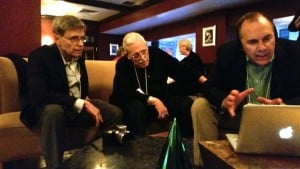
There were the Detroit Radio Reunions, spearheaded by “Radio’s Best Friend”, Art Vuolo, where Detroit DJs from every station came home to reminisce. Keener always seemed to be at the center of the conversation. And there was a magical gathering of the original WKNR Key Men in New York City, an event that Steve and I were honored to attend, where the rarefied group of announcers who made Keener what it was, came together one more time to ponder how fate, talent and timing intersected to make it possible for them to make broadcast history.
WKNR went “from worst to first” in 62 days back in late 1963. In the context of history, her prime was exceedingly brief. But her influence continues to this day, not just here, but on sister sites like Motor City Radio Flashbacks, and wherever people gather to remember what it was like back in the day when garage bands could become rock stars, when Detroit was the automotive capital of the world and a small group of men and women gathered in Dearborn to help change the definition of popular music.. forever.
Keener13.com has been a labor of love for Steve and me these past 13 years. Our ability to tend to the site has ebbed and flowed as we’ve raised our own families and built our own careers. But we’ve always returned here, to add some fresh content, to respond to the welcome questions and comments that continue to come our way, and to tell the Keener tale to a generation that consumes music on smart phones and never knew the thrill of interacting with that friend who’s voice helped you navigate your youth through the small speaker of a transistor radio.
Keener lives!
Chevy Is Revvin’ UpThe Motor City
If you listen closely, you can hear it coming.
The 2015 Woodward Dream Cruise is barely 6 weeks away! And the buffers are polishing, the detailing meticulous, the planning and plotting for the perfect viewing area, or a sweet ride down M1 are revving up. And why not, for the Highest of Holy Days; when we as Detroiter’s, as members of the Crusin’ with Keener on Saturday night generation, celebrate the very DNA that made Motown The Motor City?
Well, here’s the best news of all. That DNA, is stronger than ever, and this week, GM’s Chevy division doubled down on the proof.
First up, after May’s stroke of genius intro of the 2016 Camaro on Belle Isle, was this week’s introduction of the 2016 Camaro Convertible.
Personally, I thought it was the bad boy of the week, until (cue Jan and Dean) the “New Girl In School” showed up.The 2016 Chevy Cruze! And it’s is searing, stunning, turn heads and drop jaws, homecoming queen beautiful.
Bet on two things: Years from now, when the Motor City’s DNA is still crushing it worldwide, these two new Chevy’s will be the pride and joy of our Keener kids and grandkids own Dream Cruise!
And somewhere, Ernie and Mr. Merollis, Trader Ray and all the rest, are smiling.
Glen Campbell Update: Documentary airs Sunday Night on CNN.
It’s great to welcome Bob Berry to the Keener Blog. He grew up a Keenerfan and has been a nationally regarded radio announcer for more than four decades.
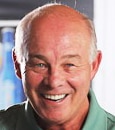 By Bob Berry
By Bob Berry
Sadly, Alzheimer’s Disease respects no one.
Family member, public figure, rich and famous, poor and unknown; it matters not. It is a vicious disease, ripping families apart, tearing at emotions, taking the very memories that stir emotion.
And perhaps because Glen Campbell was a star of the first magnitude, his battle with Alzheimer’s struck a chord and stirred emotions in all of us. His courage at the Grammy awards. His missing the Academy Awards. Touring, Living, Pressing On, into the unknown.
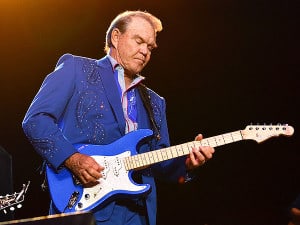
Here’s an update on Glen’s condition, from his daughter Ashley, courtesy of Rolling Stone.com, and it’s tough stuff. But, as the family has done since the announcement of Glen’s fight, there is a larger purpose: Our education.
Sunday Night at 9pm, CNN will air “Glen Campbell: I’ll Be Me”, the beautiful and moving documentary of Glen’s last tour, and his gradual descent into the emptiness that is Alzheimer’s. It exposes raw truths, it celebrates a great entertainer; it is a testament to a family supporting and encouraging a dignified end of (cognitive) life.
For those of us of the Keener generation, who are facing the challenges of aging, and caring for aging parents who also may be facing Alzheimer’s or dementia issues, it is especially poignant.
All of us at Keener13.com hope you enjoy it. And ask for prayers of health and thanksgiving for Glen and the Campbell family.
Keener Rain
With all the rain we’ve been having this weekend, we thought it might be fun to review some rain songs from the WKNR Music Guide. At least one charted every year between April of 1965 and March of 1972. 16 in all.
Baby the Rain Must Fall: Glenn Yarbrough – April, 1965
https://www.youtube.com/watch?v=DdKzdO0ItsE
Rhapsody in the Rain: Lou Christie – April, 1966
Rain on the Roof: Loving Spoonful – November, 1966
Rain: Beatles – November, 1966
Tell It To The Rain: Four Seasons – December, 1966
https://www.youtube.com/watch?v=O7dVzU2bYQc
Don’t Go Out Into The Rain: Herman’s Hermits – June, 1967
The Rain in the Park and Other Things: Cowsills – October, 1967
Summer Rain: Johnny Rivers – December, 1967
I Wish It Would Rain: Temptations – May, 1968
You Don’t Have to Walk in the Rain: Turtles – June, 1969
Walkin in the Rain: Jay and the Americans – January, 1970
Who’ll Stop the Rain: Creedence Clearwater Revival – February, 1970
https://www.youtube.com/watch?v=7ALnh3w32VE
Fire and Rain: James Taylor – October, 1970
Have You Ever Seen the Rain: Creedence Clearwater Revival – March, 1971
Rain Dance: Guess Who – August, 1971
In The Rain: Dramatics – March, 1972
Songs with Colors in the Title
 How many tunes can you remember that were inspired by colors?
How many tunes can you remember that were inspired by colors?
Here are a few you may have heard in and around the Keener era:
- Baby Blue – 1972 – Badfinger
- Baby’s In Black – 1964 – The Beatles
- Ballad Of The Green Berets, The – 1966 – Sgt. Barry Sadler
- Big Yellow Taxi – 1970 – Joni Mitchell
- Black Dog – 1972 – Led Zeppelin
- Black Magic Woman – 1971 – Santana
- Black Night – 1970 – Deep Purple
- Blackbird – 1968 – The Beatles
- Blue Bayou – 1963 – Roy Orbison
- Blue Moon – 1956 – Elvis Presley
- Blue On Blue – 1963 – Bobby Vinton
- Blue Velvet – 1963 – Bobby Vinton
- Blueberry Hill – 1957 – Fats Domino
- Brown Eyed Girl – 1967 – Van Morrison
- Brown Sugar – 1971 – The Rolling Stones
- Color Him Father – 1969 – The Winstons
- Colour My World – 1970 – Chicago
- Colours – 1965 – Donovan
- Crimson And Clover – 1969 – Tommy James & the Shondells
- Crystal Blue Persuasion – 1969 – Tommy James & the Shondells
- Deep Purple – 1963 – Nino Tempo and April Stevens
- Don’t Make My Baby Blue – 1965 – Shadows
- Goldfinger – 1965 – Shirley Bassey
- Grass Is Greener, The – 1963 – Brenda Lee
- Green Eyed Lady – 1970 – Sugarloaf
- Green Grass – 1966 – Gary Lewis & the Playboys
- Green Green Grass Of Home – 1966 – Tom Jones
- Green Onions – 1962 – Booker T. & MG’s
- Green River – 1969 – Creedence Clearwater Revival
- Green Tambourine – 1968 – The Lemon Pipers
- Leave Me Alone (Ruby Red Dress) – 1973 – Helen Reddy
- Lil’ Red Riding Hood – 1966 – Sam the Sham & the Pharaohs
- Love Is Blue – 1968 – Paul Mauriat
- Maxwell’s Silver Hammer – 1969 – Beatles
- Mellow Yellow – 1966 – Donovan
- Mrs. Brown You’ve Got A Lovely Daughter – 1965 – Herman’s Hermits
- My Blue Heaven – 1956 – Fats Domino
- Navy Blue – 1964 – Diane Renay
- Nights In White Satin – 1972 – The Moody Blues
- 1, 2, 3, Red Light – 1968 – 1910 Fruitgum Co.
- Paint It Black – 1966 – The Rolling Stones
- Pink Panther Theme – 1963 – Henry Mancini
- Purple Haze – 1967 – Jimi Hendrix Experience
- Red Red Wine – 1968 – Neil Diamond
- Red Roses For A Blue Lady – 1965 – Bert Kaempfert
- Red Roses For A Blue Lady – 1965 – Vic Dana
- Red Rubber Ball – 1966 – The Cyrkle
- Roses Are Red (My Love) – 1962 – Bobby Vinton
- Say It Loud- I’m Black And I’m Proud (Part 1) – 1968 – James Brown
- Silence Is Golden – 1964 – The Four Seasons
- Silence Is Golden – 1967 – The Tremeloes
- Silver And Gold – 1991 – Dolly Parton
- Silver Bird – 1970 – Mark Lindsay
- Song Sung Blue – 1972 – Neil Diamond
- Suite: Judy Blue Eyes – 1969 – Crosby, Stills and Nash
- White Rabbit – 1967 – Jefferson Airplane
- White Room – 1968 – Cream
- Whiter Shade Of Pale – 1967 – Procol Harum
- Yellow River – 1970 – Christie
- Yellow Submarine – 1966 – The Beatles
Detroit Concerts
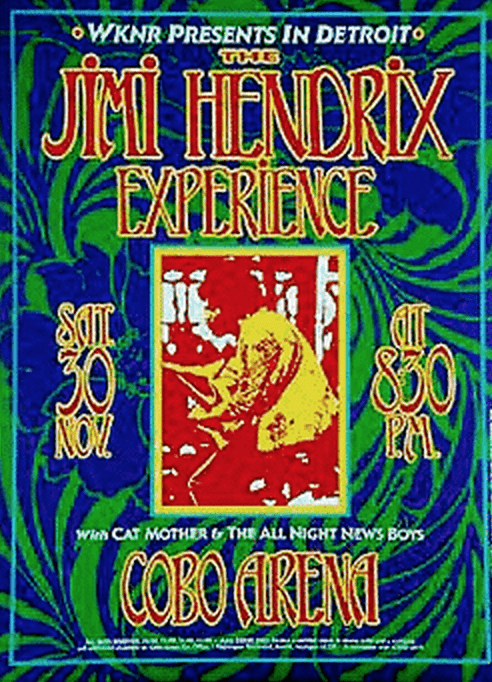 Keenerfans well remember the energy generated at Russ Gibbs Grande Ballroom. It was an amazing place to see bands on their way up the rock n roll zigurat, coupled with hard working local acts, who sometimes upstaged their headliner counterparts.
Keenerfans well remember the energy generated at Russ Gibbs Grande Ballroom. It was an amazing place to see bands on their way up the rock n roll zigurat, coupled with hard working local acts, who sometimes upstaged their headliner counterparts.
But when an act hit the big time, they played Cobo Hall and Olympia Stadium. And radio stations like WKNR sponsored the show. From the Beatles and Beach Boys to Jimi Hendrix and the Monkees, Keener’s voice was a powerful audience attractor.
Promoters as nationally known as Dick Clark chose the station as a partner and a few lucky Keenerfans often got to to backstage to meet the acts after the show.
How many memorable concerts do you remember seeing at Cobo and Olympia?
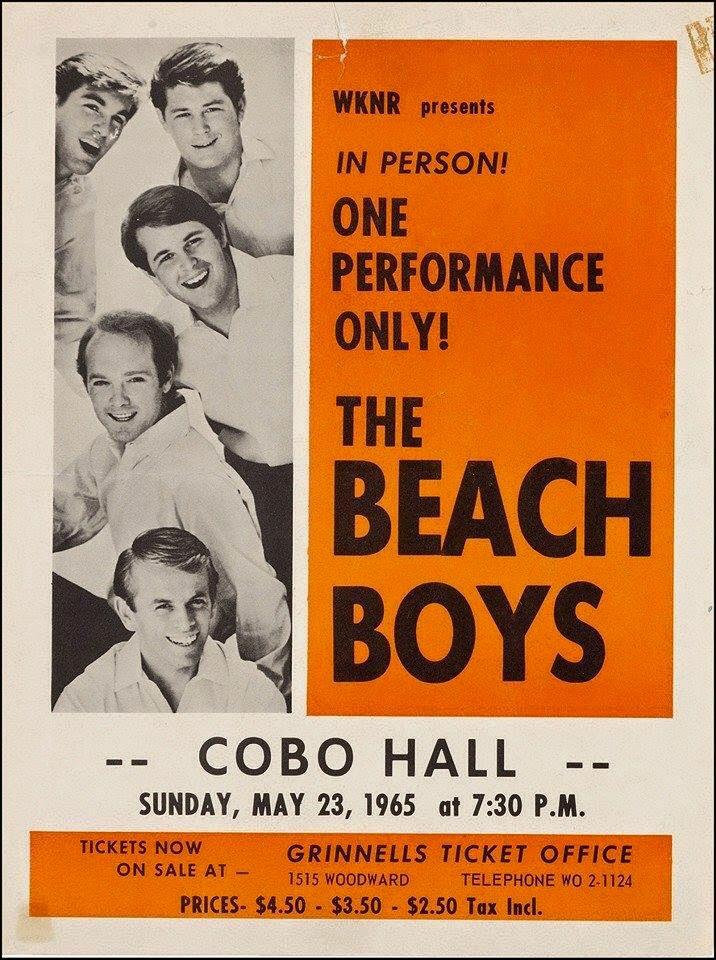

The Story of Coca Cola’s Iconic “I’d like to teach the world to sing” commercial
For all of you Mad Men fans out there, here is the story behind one of the most iconic ads of a generation.
This week in 1965
A big jump for the Beau Brummels this week in 1965. Soupy Sales novelty tune, “The Mouse” is in it’s second week on the charts. And one of the last times you’d see a name like Bert Kaempfert on the WKNR Music Guide.
A slightly censored hit from 1961.
On this date in 1962, Billboard Magazine reported that last year’s most-played jukebox record was ‘Big Bad John’ by Jimmy Dean. Many stations, including Keener’s predecessor, WKMH, insisted that the line “At the bottom of this mine lies one hell of a man,” be changed to “a big, big, man,” before they would play it.
The 1970 March on Washington
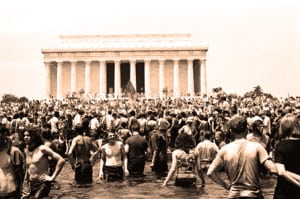 On this day in Keener history: 100,000 young people demonstrated peacefully in Washington, D.C., demanding the withdrawal of U.S. military forces from Southeast Asia. later, a few hundred militants spread through surrounding streets, causing limited damage. Police used tear gas to disperse the most threatening crowds.
On this day in Keener history: 100,000 young people demonstrated peacefully in Washington, D.C., demanding the withdrawal of U.S. military forces from Southeast Asia. later, a few hundred militants spread through surrounding streets, causing limited damage. Police used tear gas to disperse the most threatening crowds.
The event was part of the story line in the 1994 Tom Hanks epic, Forrest Gump.
Remembering the 1964 New York World’s Fair
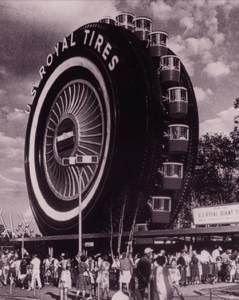 For many of us in the Keener Generation, a pivotal memory was forged in the summer of 1964 when we traveled with our family to the New York World’s fair. It’s theme was “Peace Through Understanding”, dedicated to “Man’s Achievement on a Shrinking Globe in an Expanding Universe”. At its center was the 12-story , stainless-steel Unisphere a symbol of the explosion of technology that paralleled the nascent US Space Program. The fair showcased four Disney themed attractions, Ford’s “Magic Skyway” the General Electric, “Carousel Theater of Progress”, The State of Illinois’ “Great Moments” with an animatronic Abraham Lincoln and the perennial “It’s a Small World” attraction, created for UNICEF. An enduring icon of the fair is The Giant Uniroyal Tire that still stands off of I-94, near Metro Airport. The fair enjoyed two six-month seasons, April 22 – October 18, 1964 and April 21 – October 17, 1965. Adult admission was just $2.
For many of us in the Keener Generation, a pivotal memory was forged in the summer of 1964 when we traveled with our family to the New York World’s fair. It’s theme was “Peace Through Understanding”, dedicated to “Man’s Achievement on a Shrinking Globe in an Expanding Universe”. At its center was the 12-story , stainless-steel Unisphere a symbol of the explosion of technology that paralleled the nascent US Space Program. The fair showcased four Disney themed attractions, Ford’s “Magic Skyway” the General Electric, “Carousel Theater of Progress”, The State of Illinois’ “Great Moments” with an animatronic Abraham Lincoln and the perennial “It’s a Small World” attraction, created for UNICEF. An enduring icon of the fair is The Giant Uniroyal Tire that still stands off of I-94, near Metro Airport. The fair enjoyed two six-month seasons, April 22 – October 18, 1964 and April 21 – October 17, 1965. Adult admission was just $2.

